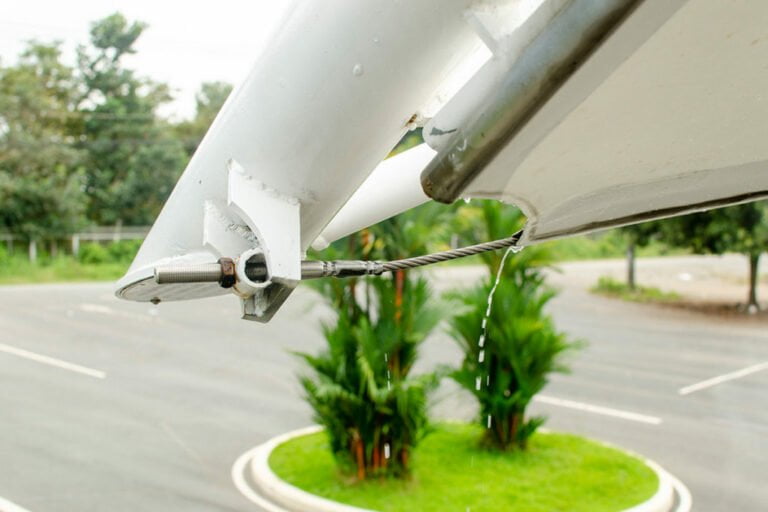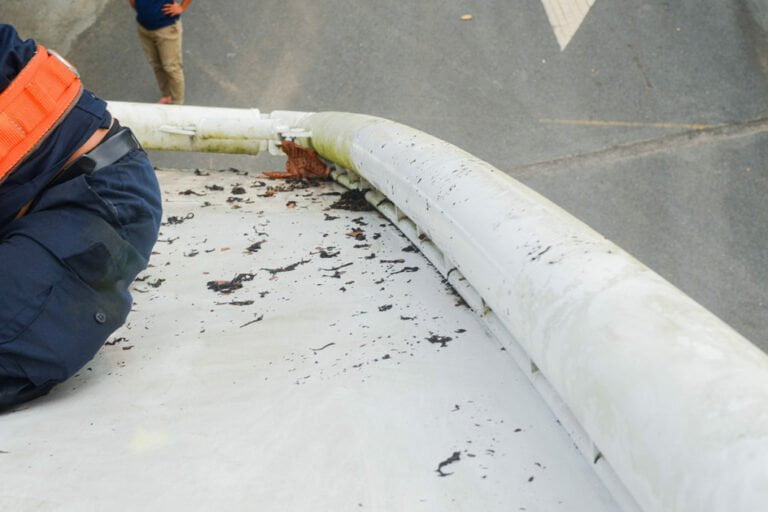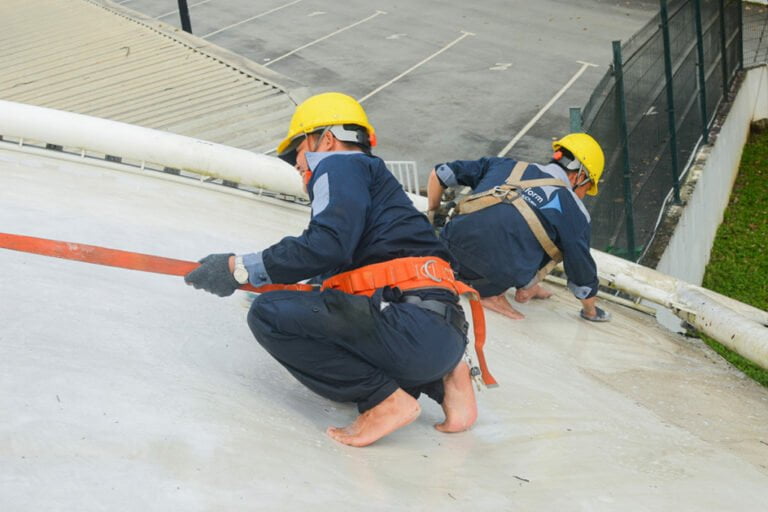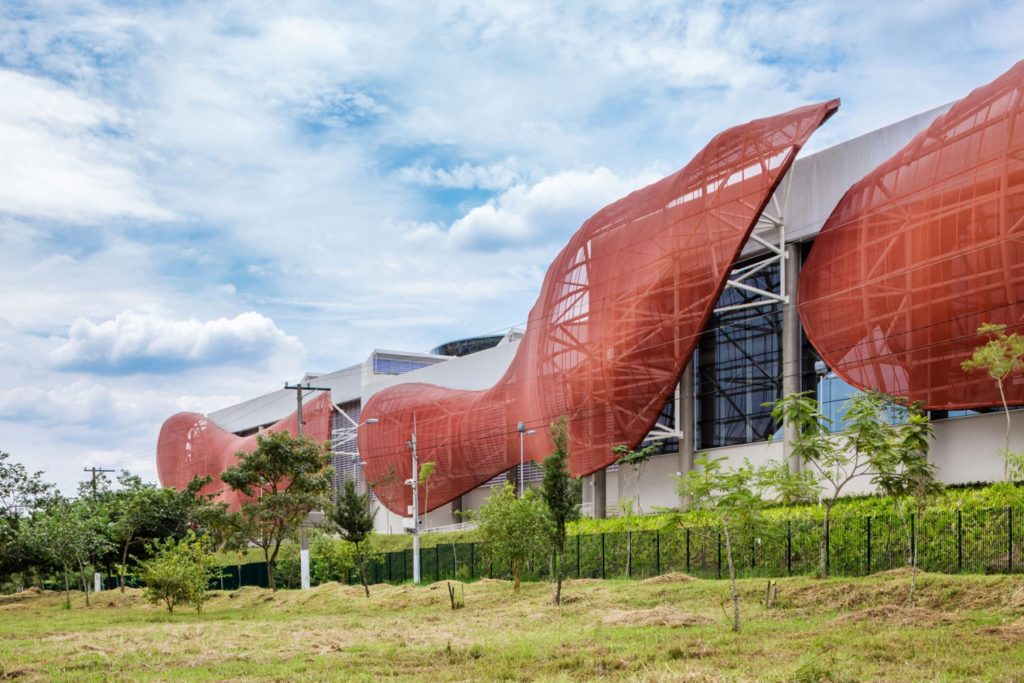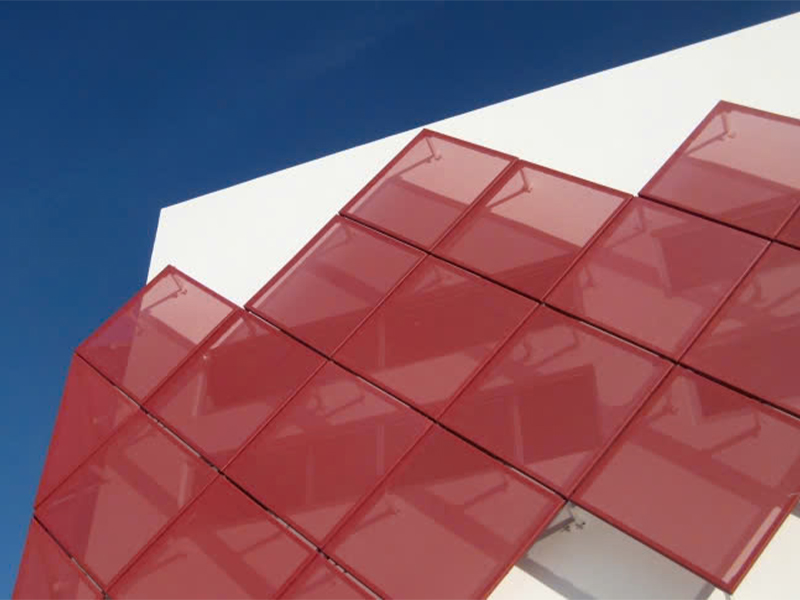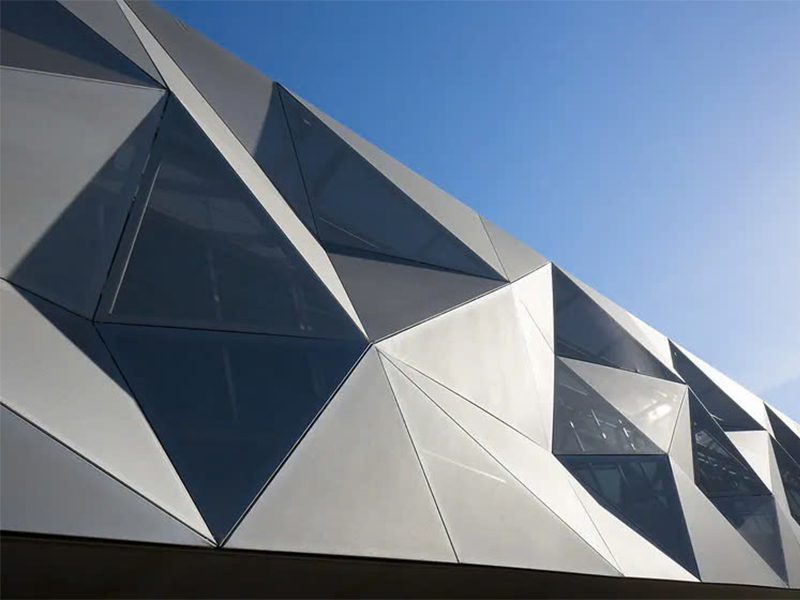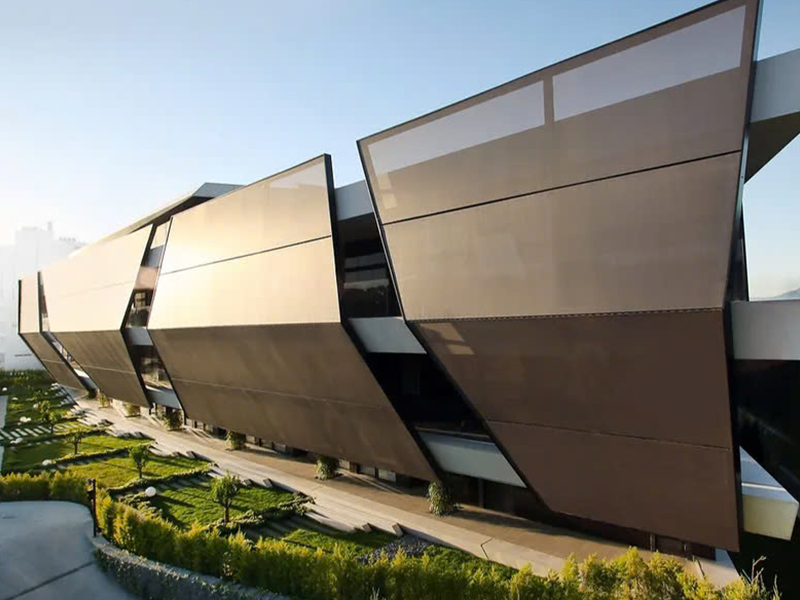1. How to maintain the tarp
The frequency of maintenance of stretch canvas depends on many factors, for example, which position on the stretch canvas accumulates the most dust?
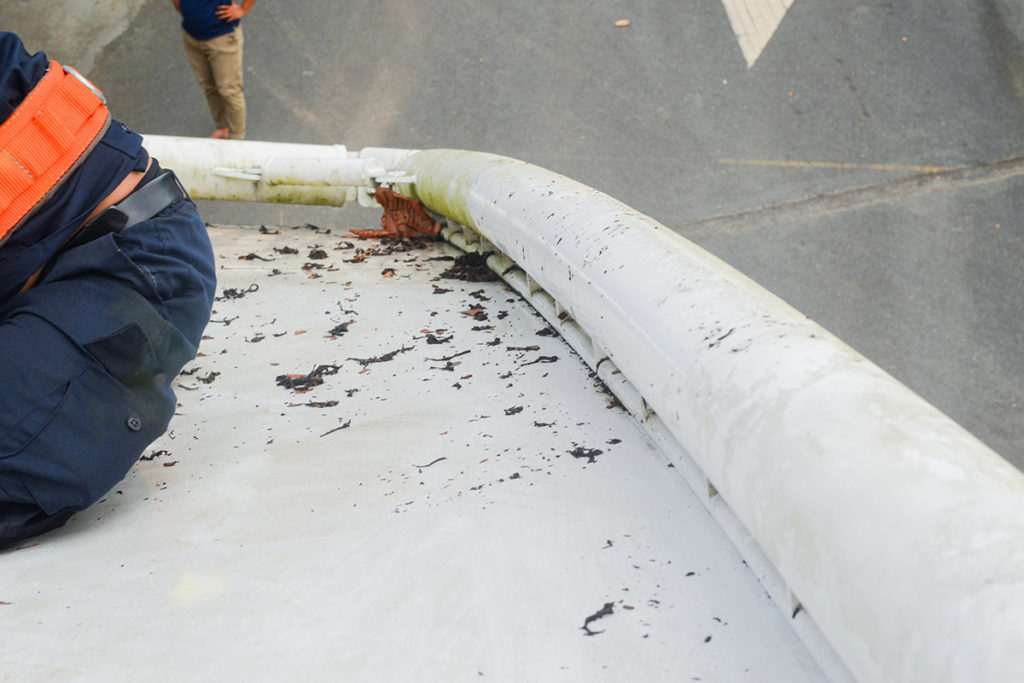
Dust often comes from foliage or in the air or from air conditioner radiators. However, maintenance of stretch canvas is recommended after a period of use to ensure sustainability and longevity of the canvas.
1. Environmental factors affect product lifespan
For outdoor roofing systems, dirt often accumulates easily due to air factors, dust from vehicles, factory areas, insects or fallen leaves from trees. Soil and dirt above, below the surface or in the drainage system of stretch canvas roofs are the cause of clogged drains, leading to dirt accumulation.
As a general rule, exterior awnings are best cleaned promptly to reduce wear on tensioners and other fixings. Therefore, it is necessary to have the right equipment to clean stretch canvas, but in many cases, you can clean it yourself. In cases where the canopy must be removed from the site, we recommend that you consult with Flexiiform prior to removal to ensure that the specific dismantling sequence is followed.
For interior stretch canvas, dirt accumulation depends on the purpose of use. Interior stretch canvas can get dirty from food and drinks. Air conditioning equipment and air handling units can also cause dust and dirt to get inside the canvas.
At the same time, it is necessary to check the canvas, frame and fixing details for any other external damage. Take photos of the condition during inspection to document any damage issues that arise.
For interior structures, many types of canvas are used depending on customer requirements. For example, PVC-coated mesh sunshades must be removed/taken down to vacuum, while soundproofing canvases need to be washed. Therefore, the appropriate method should be discussed and discussed with Flexiiform to minimize risks.
Regardless of the technique for the interior or exterior product, Flexiiform will provide you with specific instructions to keep your roofing in top condition. Besides, we are always ready to advise or support on maintenance, ensuring your roof is always in good condition for a long time. Please contact Flexiiform for more information.
Flexiiform provides roof cleaning services upon request.
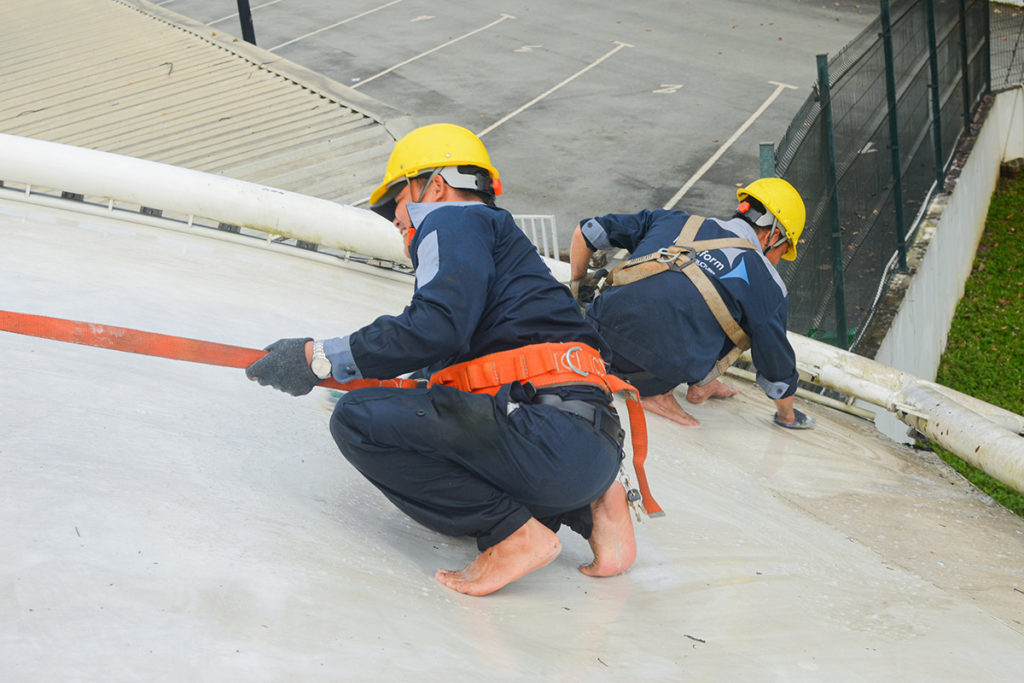
3. Maintain stretch canvas by proper cleaning
Many factors cause dust accumulation and fungal growth on the interior and exterior surfaces of awnings such as: terrain, shape of the awning, ventilation, humidity or lack of direct sunlight. To maintain the aesthetics of the canopy, it should be cleaned every three months or when dust or fungus appears.
- Rinse the canopy with clean water.
- Use detergent diluted with clean water
Spray the solution onto the roof using a low-pressure water sprayer. Let the solution absorb. (Do not clean the canopy in direct sunlight or at temperatures above 18°C)
- Wash the canopy
Use low pressure water jets. Make sure the canopy is thoroughly washed. Any remaining detergent can lead to fungal growth.
- Dilute the detergent
– Light dirt accumulation: concentration 5%, water temperature about 20°C
– Moderate dirt accumulation: concentration 10%, water temperature about 20°C
Do not use chemicals for cleaning. Chlorine and Bleach can turn small stains into large purple stains and will damage the canvas.
- SHOULD
– Clean the upper and lower surfaces at the same time
– Keep plants away from roofs
– Clean immediately when you see dust/fungus above or below the canvas
– Keep the roof clear
– In high condensation conditions, using water to wash the lower surface of the canvas will help prevent the accumulation of dirt and condensation in the same area.
– Maximize direct sunlight exposure to the canopy when possible.
– Accumulates a lot of dirt: concentration 10%, water temperature about 50°C
– Clean thoroughly around all canopy fixing parts.
* Important note: Workers must wear safety belts and have safety cables locked.
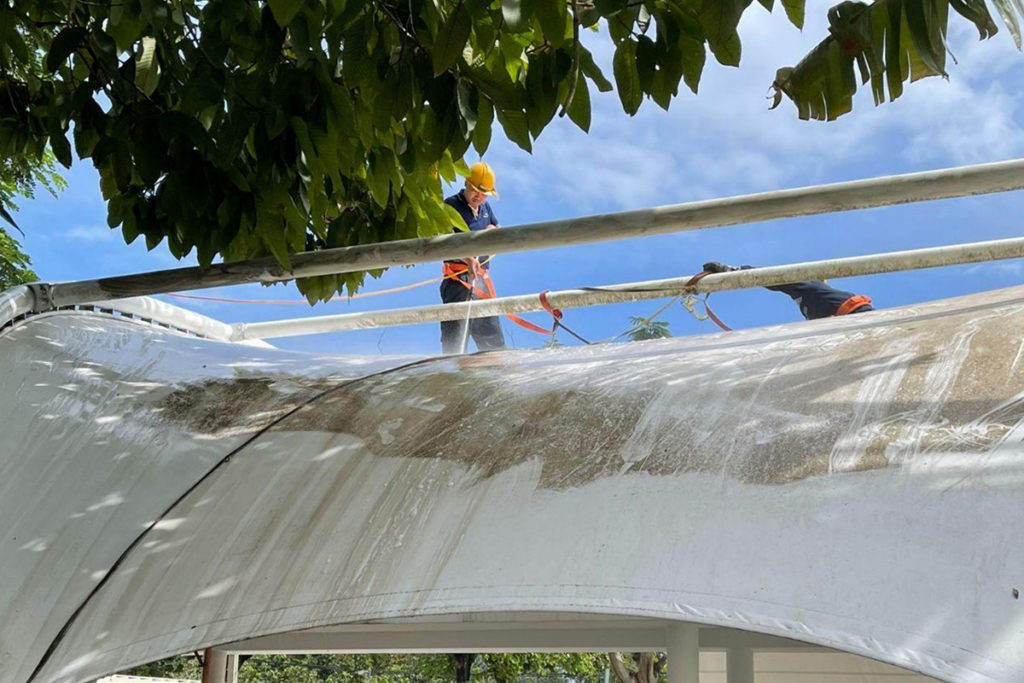
4. Check stretch canvas components during Maintenance
The Owner's personnel will perform visual inspections every six months, using the inspection schedule and Maintenance Schedule as a guide.
– Check cables at all anchor points. Check that tensioners, bolts, lock nuts, lock screws and other locking devices are tight and in the correct position.
– Check the cable and cable connectors for deterioration, rust, dust accumulation or water seepage.
– Check the awning clamps, making sure the clamp bolts are in place and secure.
– Check each clamp area to see if there is dust accumulation or water penetration.
– Wash the cables and cable connectors in water to remove any accumulated dirt.
– Spray CRC waterproof oil or similar on all thread ends, making sure none of the spray touches the fabric membrane. Clean the specialized spray bottle.
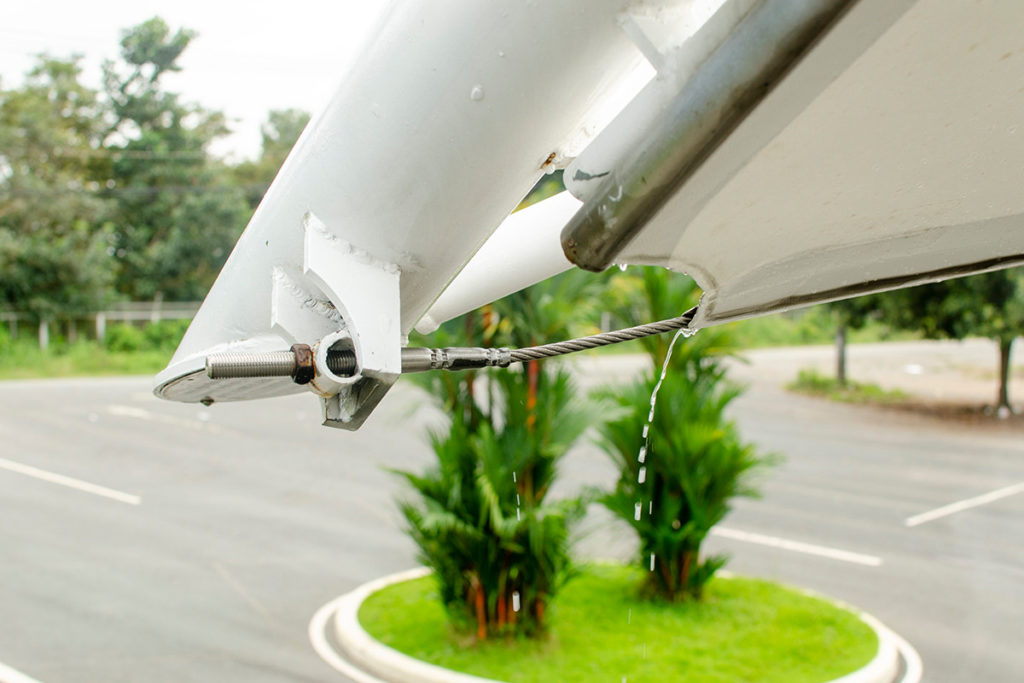
– Check the tarp for cuts, holes or tears
– Check for awning cable tarps, terminal areas and dust accumulations that may be exposed to water. – Wash away accumulated dirt with clean water and detergent as recommended by the tarpaulin manufacturer.
– Clean dust and cobwebs accumulated under the roof. This is best done during the day, making it easier to clean areas that are harder to see.
*Important note: Do not use chemicals without prior approval with the tarpaulin manufacturer.
FlexiiForm Proud to be one of the leading units in Vietnam providing stretch canvas design and construction solutions. Formerly originating from FasTech company, FlexiiForm team brings together experts with over 10 years of experience in the industry and a team of consulting solutions according to requirements for a variety of models and projects at home and abroad. Contact FlexiiForm consulting or visit Fanpage FlexiiForm and Website to learn more about service and product information.
Lorem ipsum dolor sit amet, consectetur adipiscing elit. Ut elit tellus, luctus nec ullamcorper mattis, pulvinar dapibus leo.


